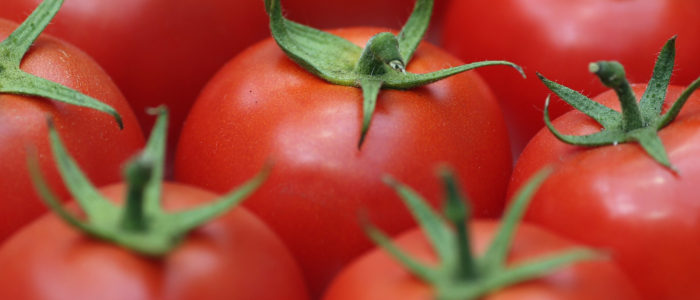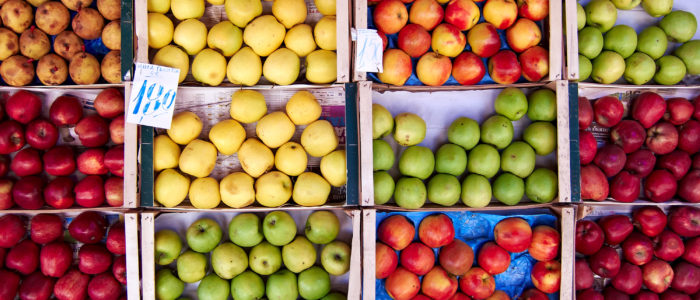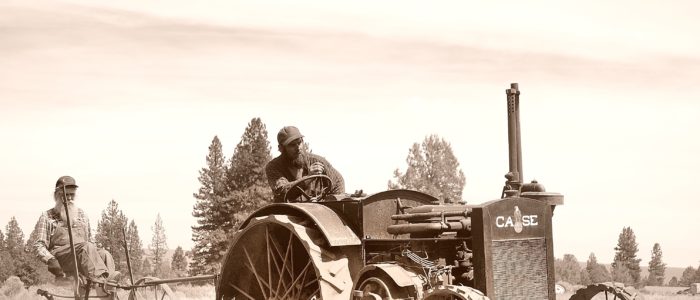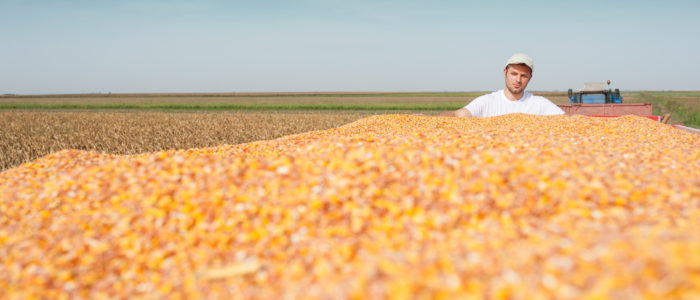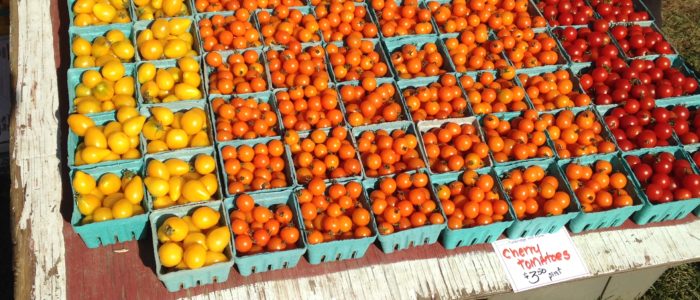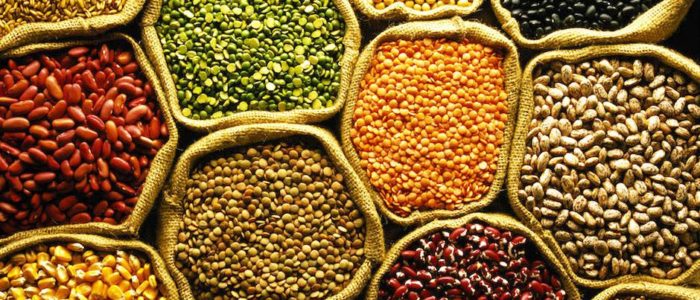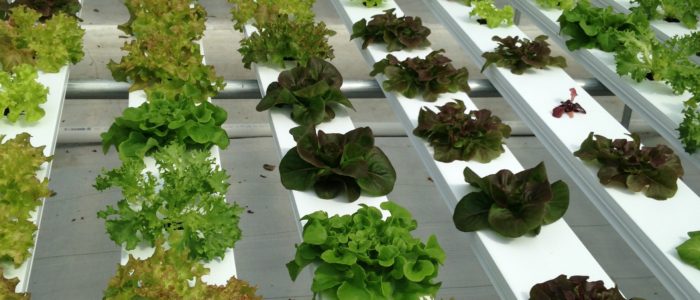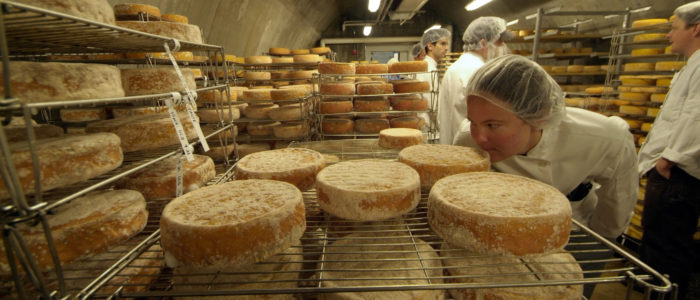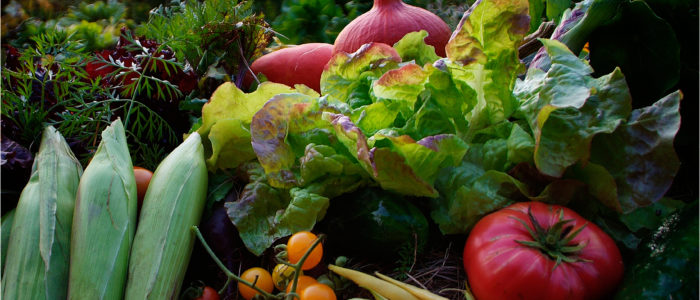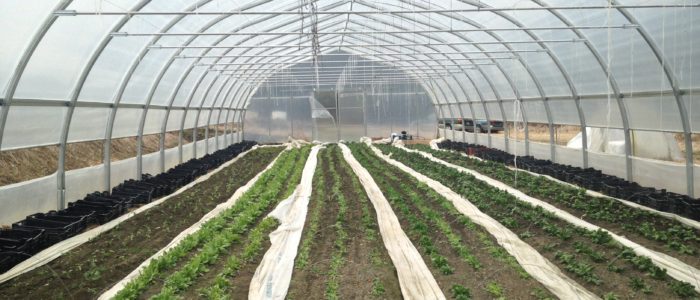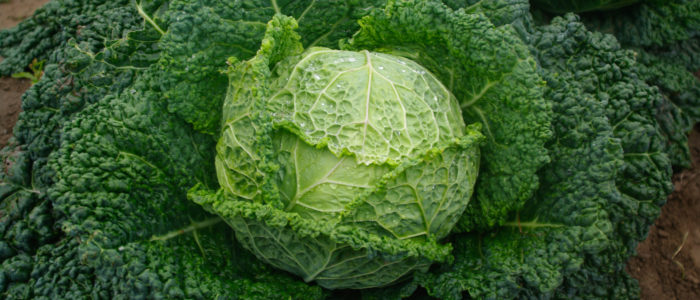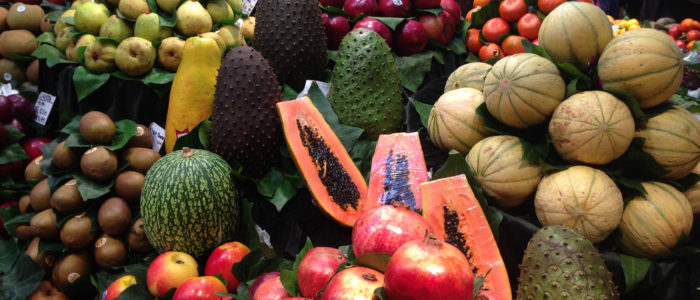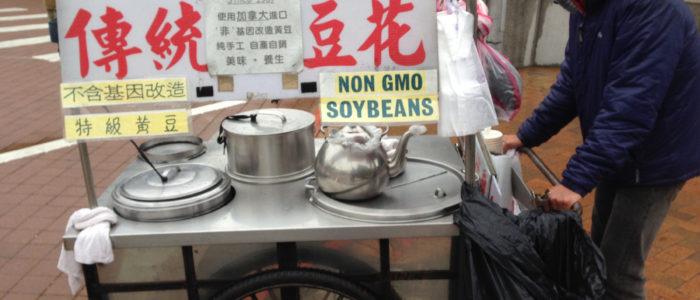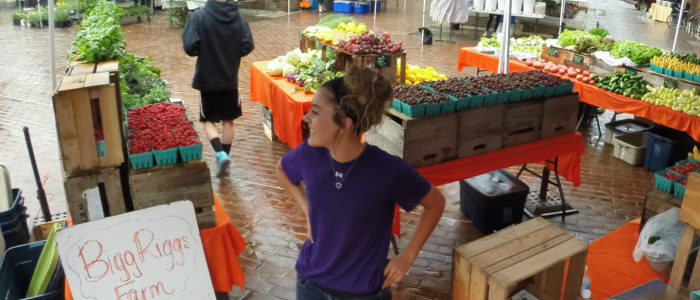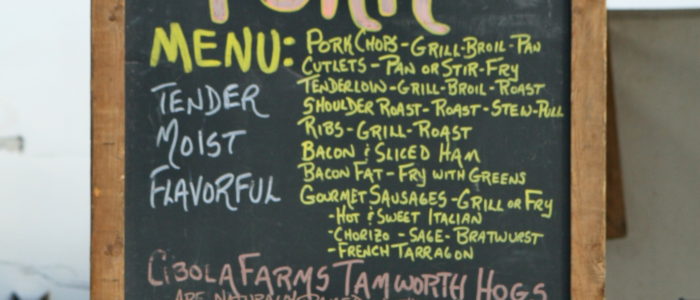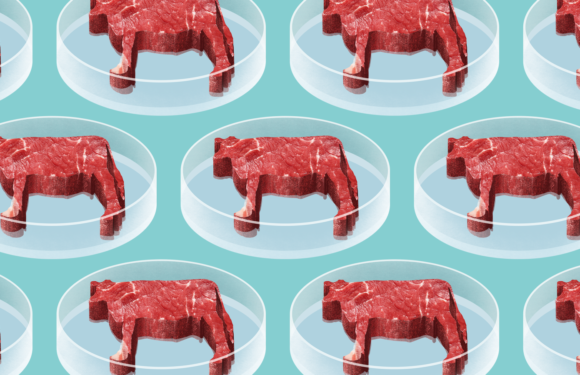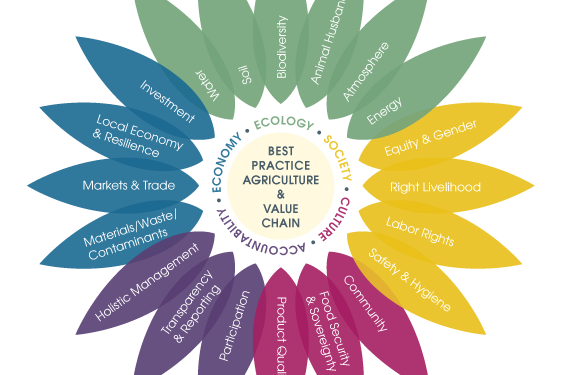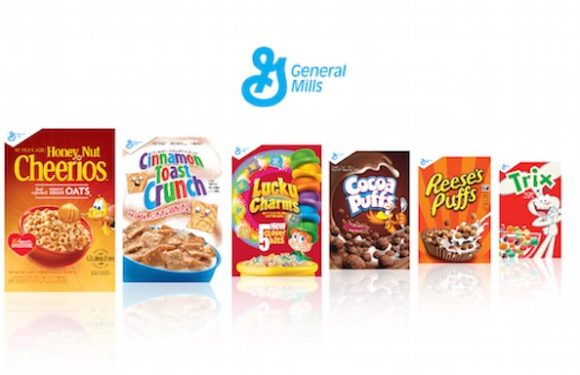The Future of Food: The Internet of Things and the Connected Restaurant Kitchen

It’s coming. There’s no avoiding it. If you are a restaurant owner, purveyor, or grower, the Internet of Things (IoT) is coming to your doorstep.
There has always been pressure to adapt to the latest technology. Before the cash register most restaurants had scant idea if they were operating at a profit or a loss. Few restaurants today operate without a POS system, an essential tool to get a handle on food, beverage and labor costs.
The name of the game today is convergence: that magical point when multiple technologies reach a plateau where they can be combined in order to yield something astonishing and new. In the last century, we saw the successive development of radio, TV, computers, personal computers, internet, multimedia, web, and now at our threshold, the Internet of Things — connecting them all.
It’s a natural evolution, and restaurateurs stand to profit enormously from it, especially the early adopters. Just as the internet revolutionized our lives over the past 20 years, the Internet of Things promises a tsunami of change that will flow through our economy, inundating the way we live and work.
In a nutshell, the IoT is a network of dedicated physical objects that contain embedded technology to sense or interact with their internal state or external environment. In other words, inanimate products in your restaurant will suddenly gain a voice, taking the guesswork out of profit-making, empowering undreamt of efficiencies and, perhaps best of all, allowing scalability, so you can build your infrastructure over time as resources allow.
According to Gartner IT Research Analysts, four years ago the global IoT market reached $485.6 billion. This year that number is projected to pass the $1 trillion mark and, by 2019, is expected to grow to over $1.7 trillion to encompass a network of more than 42 billion connected devices worldwide.
With the advent of 5G networks and better access to the Internet, IoT is already changing the way we interact with the world around us. Gartner estimates that by 2020, there will be 25 billion smart devices transmitting tiny amounts of data to us, to the cloud and to each other. Considering the safety and cost-saving benefits of IoT devices in restaurants, the market is primed for expansion.
“While IoT restaurant technologies may cost more than their traditional counterparts at the outset, these tools quickly pay for themselves with the value they add to your restaurant.” -Darryl Benjamin
“It’s difficult to imagine any restaurant that wouldn’t benefit from a low-cost, 24/7, real-time temperature monitoring and notification system,” says Ray Almgren, chief marketing officer at Swift Sensors. “Over time, all restaurants will deploy this type of technology to improve their operations, and soon regulations and health departments will require it.”
While IoT restaurant technologies may cost more than their traditional counterparts at the outset, these tools quickly pay for themselves with the value they add to your restaurant. By making the move today your tomorrow could be a lot easier and a lot more profitable. The question is not if a restaurant owner should implement an IoT system, but when. Those who don’t adopt new technology and make the leap to IoT risk being left behind.
Whether you’re a standalone full-service restaurant, a restaurant chain, a commissary, catering business, or a retail restaurant with a prepared-food section, IoT allows the interoperability between products to standardize, maintain, and assure food safety, compliance, and energy management.
We know about the challenges: Most food service retailers are reluctant to be early-movers. Lingering doubts about feasibility, potential, and cost present obstacles, many of which can be addressed with the right information.
What’s It All About?
What if you could replace your unrelated kitchen equipment with interconnected sensors that would seamlessly communicate with each other through wireless communication, and with minimal human intervention? Like the conductor of an orchestra, you lead the operation via smartphone updates fed to you in a constant stream of information that has been processed by a central computer brain from which you manage every component.
The advantages are manifold and substantial. Not only will you be able to gather data on the efficiencies of each component of your IoT network, but you’ll gain a firm handle on daily operations, inventory, resource and energy management, speed and accuracy of service, quality and safety of food, and wastage and equipment maintenance. The kicker is in the data analytics, the centralized brain that gathers, analyzes, and optimizes processes and quality to drive efficiency and increase levels of economy and service that previously seemed unreachable.
What Does the Connected Commercial Kitchen Look Like?
There are four ingredients to a restaurant’s IoT setup: sensors, a gateway to harvest the data, a cloud-based platform to store and interpret the data, and a mobile app on your smartphone to receive actionable information.
Sensors are attached to coolers, freezers, ovens, hot boxes, and cooktops to monitor temperature, humidity, water presence, vibration, acceleration, motion, activity, electric voltage, electric current and resistance. All of these smart “things” have unique identifiers and can automatically transmit data across a network. The owner or manager sets the high- and low-temperature thresholds and receives notifications by email, text message or phone call any time conditions exceed it. Additional sensors keep tabs on the functioning of key mechanisms within each piece of equipment, such as an oven’s heating unit and a refrigerator’s compressor.
 Collected data is sent to a place it can be stored and analyzed, such as a cloud-based platform. Programmable business rules spin the data into gold, or actionable information sent directly to a dashboard (control center) on your mobile app.
Collected data is sent to a place it can be stored and analyzed, such as a cloud-based platform. Programmable business rules spin the data into gold, or actionable information sent directly to a dashboard (control center) on your mobile app.
In turn, the data can be analyzed to improve operational efficiency, productivity, marketing, resource utilization, security, employee and guest safety, and the guest experience. Controlled interactions between these programs leads to ambient intelligence, which allows a network of things to react and adapt to the changing environment around them.
How Will IoT Make My Restaurant More Efficient?
Let’s take a look at actual restaurant-efficiency-bolstering IoT solutions.
- Maximize asset life cycles: Remotely monitor all equipment and troubleshoot potential problems, often avoiding equipment failure and related repairs. IoT applications can also send reminders to schedule maintenance.
- Smart kitchen food safety monitoring system: Monitors refrigeration and other temperatures 24/7/365; leverages real-time, escalating alerts to ensure compliance when food is not being stored or prepared within preset tolerances; checks proactive exception reports to detect equipment that may be problematic.
- Display system: Replaces old school kitchen receipt printers by improving communication between your front-of-house and back-of-house teams; eliminates lag time by having orders appear immediately on a monitor or tablet so your team doesn’t need to wait for a receipt to be printed; and keeps track of how long it takes your team to complete tickets, the data can help you manage your back-of-house team and make well-informed decisions about your menu.
- Smart commercial refrigerator: With IoT technology, a refrigerator can become separate appliances: Each shelf, drawer, and freezer section can be monitored and thermostatically controlled independently. “Incompatible” foods, such as brisket and birthday cake, can be stored and cooled/frozen at different levels in the same appliance. The system can determine spoilage time, when food is supposed to be used by, if its chemical makeup changes (such as a marinade), and if pathogens are present.
- Smart oven: A smart combi-oven is a three-in-one oven that can cook using convection heat, steam, or a combination of both. A smart combi-oven adds another layer of technology to the appliance by offering remote control and monitoring. Benefits include space and money savings, since you need only one kind of oven for most of your baking, and remote control of your oven means that you need fewer staff in your kitchen.
Supply
Apps can allow your operations management team to check on a delivery driver’s progress and easily contact them when needed. The same principle can be applied to service technicians, human resources or whatever department is applicable to your restaurant business.
Quality Control
Equipped with a temperature probe, barcode scanner and RFID infrared temperature reader, you can monitor and track your food across the supply chain. Should an issue arise, you have the detailed, automated audit trail to prove your company followed proper food safety protocol.
Reduced Energy Use and Costs
The Internet of Things in your restaurant will reduce energy expenses on HVAC, refrigeration, and lighting. It will limit equipment downtime by anticipating maintenance and it will predict equipment replacement, which facilitates planned capital expenditures.
IoT and Compliance
As an alternative to paper-based monitoring and reporting for Hazard Analysis and Critical Control Points (HACCP) compliance as mandated by law, mobile devices are preloaded with HACCP checklists that prompt workers to perform required inspections, verify that they were completed, and then gather and transmit data to the cloud where it is stored, analyzed, and reported for compliance.
Inventory Control and Management
With IoT-enabled inventory tools integrated into existing POS systems, managers can keep track of inventory easily and remotely. Inventory is automatically adjusted based on sales and daily orders, and replacement orders are generated whenever an item falls below the minimum threshold.
Tracking inventory from farm-to-fork prevents food waste, deters in-house theft and helps manage the cost of inventory, while also reducing the need to over-staff, or over-provision food and ingredients that often have a very limited shelf life.
Improved Guest Experience
Many industry leaders feel IoT delivers a superior guest experience more efficiently and effectively than ever before. Aside from helping to streamline and manage day-to-day operations, IoT devices deliver a unique dining experience for your guests. Many of these IoT innovations sound futuristic, but they’re already here! There are apps to allow guests to have a say in the music, and loyalty programs that are triggered by a wearable device to let you know when the customer has entered the building.
It’s raining, and Jake is nearby. Offer him a hot drink upgrade or a muffin combo instead of his regular coffee. This is hands-down a more engaging way to approach loyalty than giving him yet another stamp on a piece of cardboard (assuming he remembers to bring it in). Using a combination of guests’ smartphones, in-store beacons, WiFi and connected services you can build individualized guest profiles and tailor rewards that are relevant to each guest in the moment.
When it comes to ordering, not only have restaurants found that diners tend to order more when they order from a device at the table, but servers also benefit from this option when they are too busy to take the order. Some restaurants install wireless transmitters on tables that can hail waiters for drinks, service, or the bill, by sending alerts to internet-enabled watches strapped to the waiters’ wrists.
Challenges
The major barrier to IoT adoption in restaurants can be “other projects.” Integrations require an investment of time and money. It should be assumed with deliberate decision and realistic goal setting.
Consider where you stand on the following questions:
- Is the data worth the effort?
- Will someone act on the knowledge gained?
- Do you have the in-restaurant real estate to make room for new equipment?
- Can IoT save money or drive revenue instead of becoming just another costly must-have technology?
- How will you best to deploy IoT investments?
Another challenge to adoption is that restaurants will need to re-evaluate their cybersecurity regularly and incorporate security as they build their technology plans, rather than as an afterthought.
Policy makers and governments will have to ensure that these new systems are safe and that IoT data is not being stolen or abused. They will also play an important role in enabling the Internet of Things by leading and encouraging standards for interoperability that makes widespread adoption possible.
Is an IoT System Affordable for Most Restaurateurs?

Building an IoT system doesn’t have to be expensive. Even a budget-friendly smartphone app can lead to cost savings, improved management practices, consistent food, better equipment utilization, reduced energy costs and increased employee engagement and morale. Small, incremental IoT improvements will quickly accumulate. More sophisticated (and expensive) IoT measurement tools provide drill-down analytics to foodservice tradesmen and can be even more valuable, providing fast ROI.
A Glance into the Crystal Ball — Preparing for Tomorrow Today
The best advice for getting started or upgrading to IoT favors the “early-mover” advantage. Start with small bites: Build a foundation for your IoT by investigating how to best leverage the IoT in your operation via a proof-of-concept and pilot. Here are recommended first steps:
- Partner with an IoT solution provider to investigate the feasibility of connecting existing equipment
- Find a provider who has a packaged solution that is inexpensive and that can be implemented in days without huge upfront investments
- Identify target-use cases and capabilities to influence key business drivers
- Select a representative sample of restaurants to build a working proof-of-concept solution
- Measure actual benefits, refine the business case, and developing a plan to roll out a pilot program
Scalable solutions need to perform established tasks more simply and efficiently. Any given task should take less time, labor and resources to achieve the same or better quality than before while also requiring less supervision. Data-supplied insights on job performance should be presented in binary terms (done/not done), whether the job was completed within a set time or resource constraint, and if safety protocols were followed. Data should reveal how these and other activities could be improved over time.
More Than the Sum of Its Parts
Existing kitchens are upgradable and retrofittable. Restaurants that don’t have the money, ambition or appetite right now for a major overhaul of their kitchen systems also can achieve substantial incremental gains in monitoring and management.
As technologies converge, blend, and resolve into a remarkable new vision of the Internet of Things for restaurants, new interactions emerge: new user experiences, new machine capabilities, and new business models and collaborations. Convergence technology like IoT is ripe for the picking, a giant step forward in the evolution of successful restaurant strategy that is greater than the sum of its parts.

